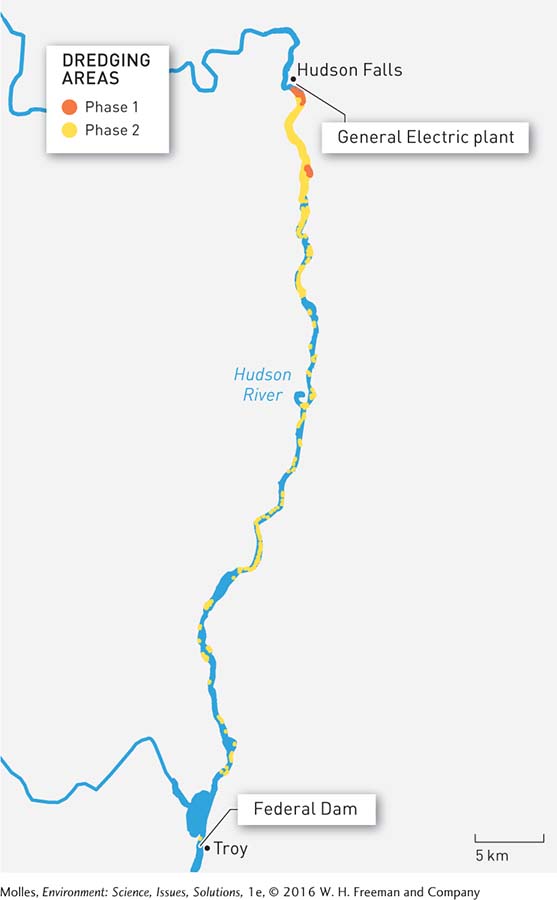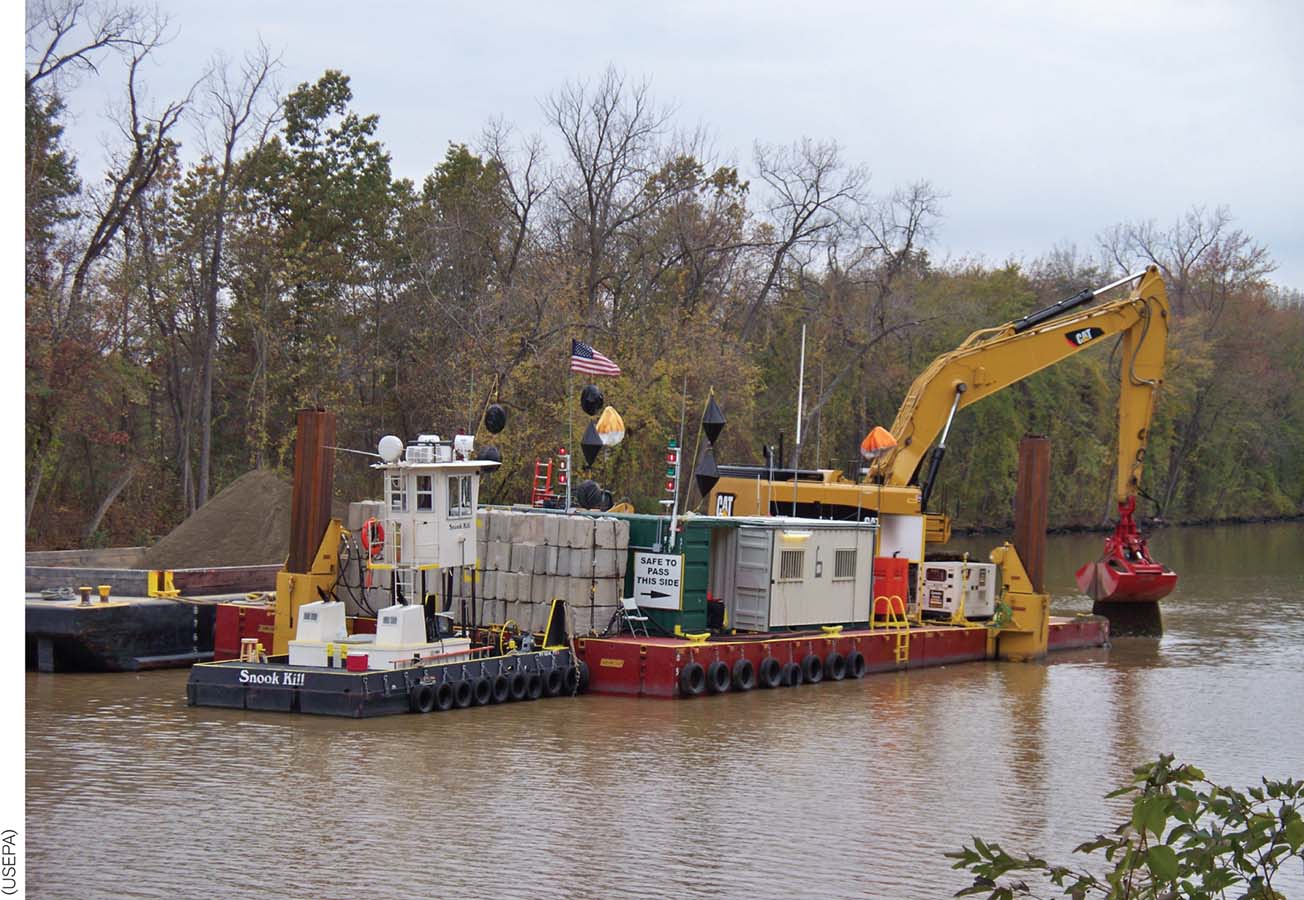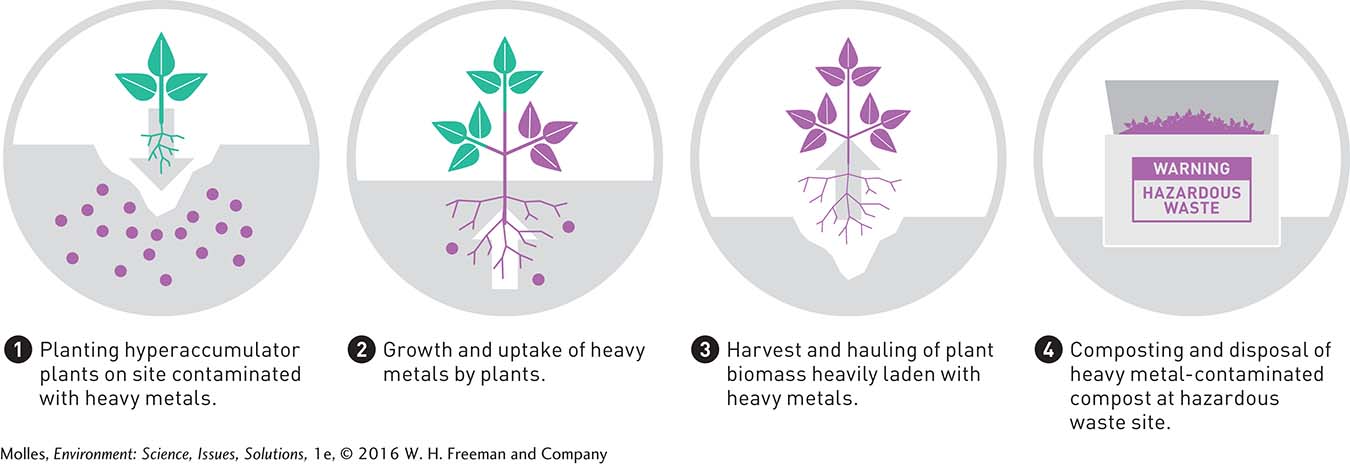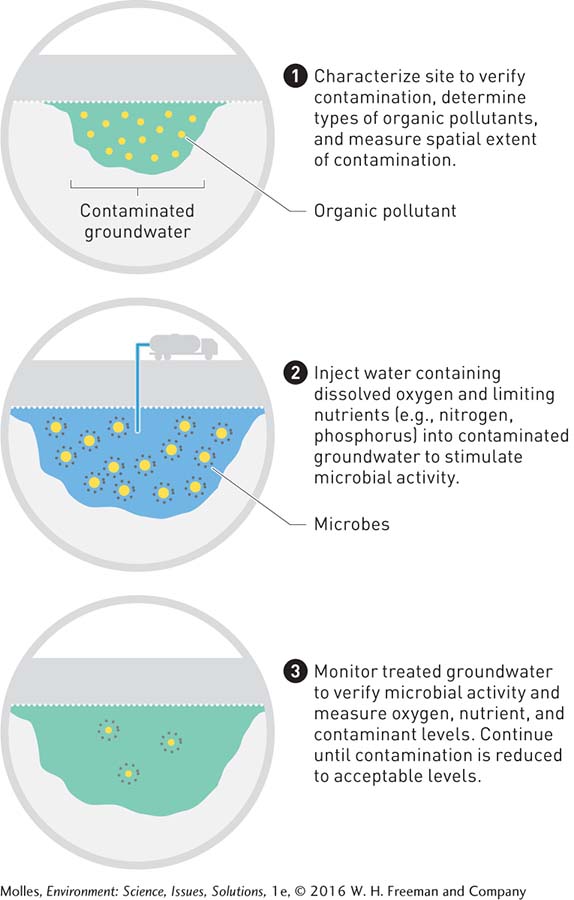13.11 Soils and sediments contaminated by hazardous wastes can be cleaned using a variety of techniques
Surprisingly, the cleanup of a severely polluted site, such as Love Canal (see Chapter 12), fell outside any existing legislative authority at the time, including the Resources Conservation and Recovery Act, which is focused on current and future management of hazardous wastes. Authority to address historical contamination required additional legislation. As we saw in Chapter 12, the U.S. Congress passed the Comprehensive Environmental Response, Compensation, and Liability Act (CERCLA), or Superfund Law, in 1980. The first goal of the Superfund program is to identify sites where contamination of air, soil, and water by hazardous substances has been sufficient to threaten human health or harm the environment. Sites sufficiently contaminated are placed on a “National Priorities List,” which in 2011 included more than 1,350 sites in the United States. Once these sites are identified, the second objective of the program is to reduce threats to human health and the environment, generally by cleaning the site of hazardous substances. The third goal is to discover those responsible for the contamination and seek payment for site cleanup.
This groundbreaking piece of legislation gave the EPA the authority to assign responsibility for a contaminated site and demand financial assistance in its remediation. This law was the beginning of efforts all over the country to clean up toxic waste sites. In the case of the Love Canal, Occidental Petroleum, which owned the Hooker Chemical company, agreed to pay $129 million in restitution. The most toxic area was dug up and reburied with a plastic liner and the neighborhood’s empty streets were enclosed by a chain link fence to prevent entry.
Persistent Pollutants in the Hudson River
The Superfund Act has also led to the cleanup of many other toxic sites around the country. In 2002 the EPA and General Electric signed an agreement to begin removing PCBs from a 64-


Why was it critical that independent experts review the dredging process and results?
The plan for dredging was divided into two phases. Phase 1 would involve one season (May to November) of dredging followed by a year spent evaluating the results of the dredging operations. The evaluations, peer-
Phase 1, completed in 2009, resulted in the removal of approximately 215,000 cubic meters (283,000 cubic yards) of PCB-

Based on independent expert review of the process and results of Phase 1 in 2010, along with comments from the public, the EPA went forward with plans for Phase 2. Planners project that Phase 2 will remove an additional 1.8 million cubic meters (2.4 million cubic yards) of contaminated sediments. Phase 2, scheduled for completion in the fall of 2015 at an estimated cost of approximately $750 million, will be followed by another phase involving habitat restoration along the shoreline and in dredged areas, as well as data collection to evaluate the success of the project.
Bioremediation
bioremediation An approach to pollution cleanup that employs organisms, generally microbes or plants, to decontaminate soils, sediments, and groundwater aquifers in place.
Rather than cleaning up a polluted site by moving massive amounts of contaminated soil or sediment to a hazardous waste facility, environmental scientists can use organisms to decontaminate soils, sediments, and groundwater aquifers. This approach to pollution cleanup, called bioremediation, can save physical work and money.

What, besides lead, is taken away if excavation and removal are used to treat a contaminated soil?
phytoremediation Bioremediation using plants to clean up contaminated sediments or soils. See bioremediation.
hyperaccumulators Plants that accumulate heavy metals in their tissue.
When the bioremediation process involves plants, it is called phytoremediation (Figure 13.40). Scientists have identified hundreds of hyperaccumulator plants that accumulate heavy metals in their tissue. Consider that excavating 30 centimeters (1 foot) of soil contaminated with lead from 4 hectares (10 acres) would require removing 18,200 metric tons (20,000 tons) of soil. By contrast, using plants to extract the same amount of lead from the soil would require safely disposing of just 455 metric tons of plant biomass, or 1/40th the amount of soil that would otherwise have been removed. In addition, the monetary costs would be a small fraction of what it would cost to excavate, transport, and store more than 18,000 metric tons of contaminated soils.

In places where groundwater has been contaminated with solvents, gasoline, and other organic compounds, bioremediation has been used to decontaminate aquifers. Many organic chemicals that were once believed to be resistant to breakdown by microbes can be metabolized by some component of a microbial community. Sometimes they need to be coaxed to multiply and do their work by adding nutrients, reducing or increasing oxygen availability, or adding particular energy sources (e.g., sugar) to the aquifer (Figure 13.41). Using such techniques, environmental scientists have successfully decontaminated polluted aquifers in situations previously considered physically or economically impossible.

Think About It
How might proximity to New York City have influenced the effort—
funds allocated— to clean up the Hudson River? How can the many thousands of square kilometers of soils that have been contaminated by heavy metals as a result of metal smelting and coal burning be effectively treated?
How do phytoremediation of soils and bioremediation of aquifers depend on Earth’s biodiversity?